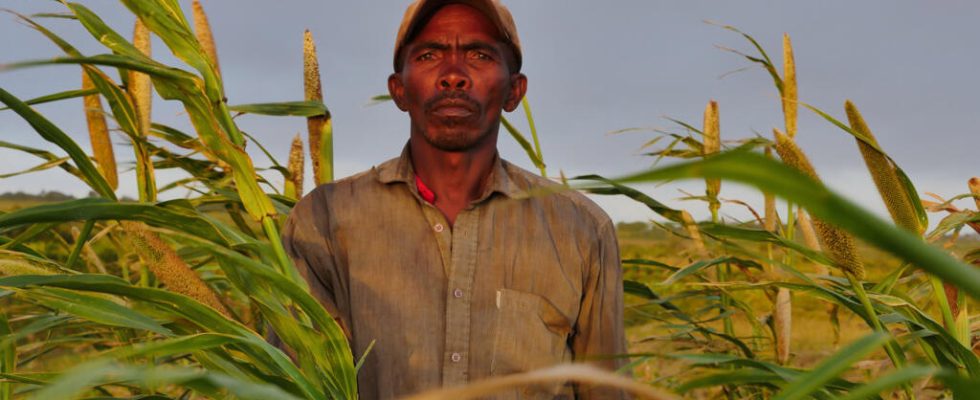Desertification, drought, famine… The Great South of Madagascar is infamous for being repeatedly prey to a multitude of ills that affect its population for decades. However, over the past two years, the implementation of actions to anticipate the consequences of drought has begun to show positive effects.
2 mins
With our special correspondent in Antsakoamamy, Sarah Tétaud
In the middle of its peanut field, in the village of Antsakoamamy, Bienvenue shines. With great pride, the farmer introduces herself as the “Head of Weather Communication”. Smartphone in hand, she shows us the application that has changed her way of farming and that of her community.
“ This phone informs me of the weather forecast. I can know a lot of things thanks to the application, she argues. When we see that it is going to rain, I inform my community that we can plant. On the other hand, when we see that there will be no rain, we do not sow. Once a week I buy credit to recharge and check the app and tell everyone the forecast. It changed our lives. This helps us better predict rainfall and is crucial for us rural farmers. »
Rain, locusts, wind… The application developed by FAO, the Food and Agriculture Organization of the United Nations, provides up-to-date agro-meteorological data that can be understood by everyone. It allows around sixty farming communities to anticipate their daily tasks, choose the seeds to plant and maximize harvests, taking into account climatic hazards.
FAO also supports seed multiplier producers, like Laly who planted millet on his one and a half hectare plot. Around him, large ears of corn, full of seeds, are the fruit of his success. Since becoming a seed producer, the farmer has benefited from training in improved cultivation techniques: “ I chose to grow millet because it is nutritious and above all, it does not need a lot of water to grow. We signed a contract with the FAO and since then, my goal has been to produce quality seeds and it is the FAO that buys them all from me. »
Better yields, selected seeds more resistant to drought and wind, awareness of other types of crops… The changes are gradual, but the results are visible.
Read alsoMadagascar wants to improve its agricultural sector to achieve food self-sufficiency
